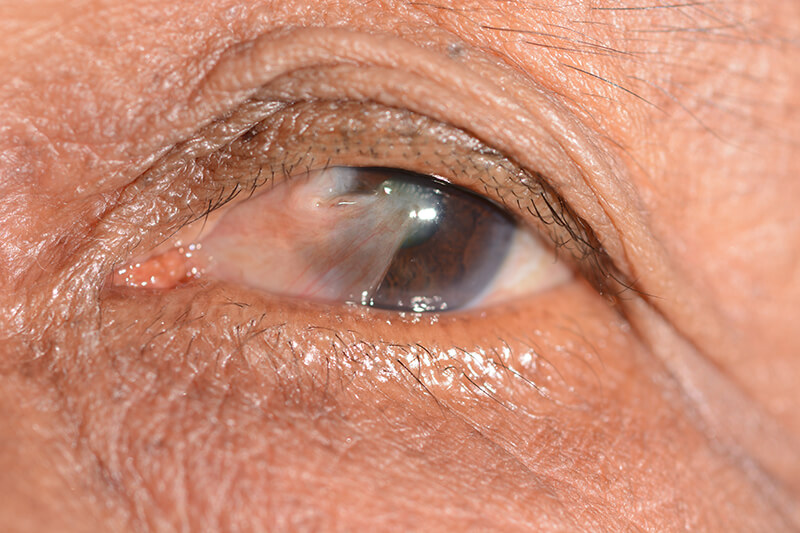Home » Common Vision Disorders » Pterygium Surgery
Pterygium Surgery
Pterygium surgery can be performed in our office surgery center and is surprisingly painless. Eyedrops are used to anesthetize the surface of the eye, after which a small device is inserted to hold the eyelids apart. A little anesthetic is then injected into the fleshy part of the pterygium, elevating it from the surface of the eyeball, after which the pterygium is peeled away. Usually no sutures are required.
Post – Operative Care
An eye patch is generally worn for one or two days. The eye may be red for up to two weeks, but ultimately there is almost no scar. If pterygia are present in both eyes, usually the second eye is operated at least one week after the first.
Recurrence
Even though they are not malignant or dangerous, up to 40% of excised pterygia can eventually grow back unless extra measures are taken to prevent this. This is especially likely if the irritation which caused it is still present (dryness or excessive sunlight) and if the pterygium was very thick and red to begin with.
We have been pleased with our results with an investigational medicine called Mitomycin. When this medication is used right away after surgery the recurrence rate drops to about 5%. This medication is usually well tolerated with no side effects. Possible side effects include delayed healing, sometimes with actual atrophy or withering away of the tissue in the bed of the pterygium. This problem is thought to have occurred primarily in patients who mistakenly took the medication much longer than they were supposed to.
If your pterygium is determined to have been caused by dryness, then closure of the overflow ducts of the lower lids is often recommended at the same time as the pterygium surgery. This too seems to help prevent recurrence.
Recommendation
If your pterygium is very small and does not bother you, then you should try using mild, soothing eyedrops such as Murine or Visine or one of the many so-called artificial tears such as Tears Naturale or Hypotears. These could be used up to four times daily on dry or smoggy days when your eyes are likely to become red. Try to keep your eyes from becoming red, because that is a sign of the inflammation which tends to make pterygia grow larger. Wearing sunglasses when you are out in bright sunlight is also helpful.
If you wish to have the pterygium excised, you should plan on being off from work for one week. (You can safely return to work immediately if you wish, but usually the eye is quite red for about a week). When you come for the procedure, have someone accompany you who can drive you home. Ice bags and pain pills are advised for the first day, but after that you just need to instill antibiotic-steroid eyedrops four times daily for two weeks and any Mitomycin for just five days.







